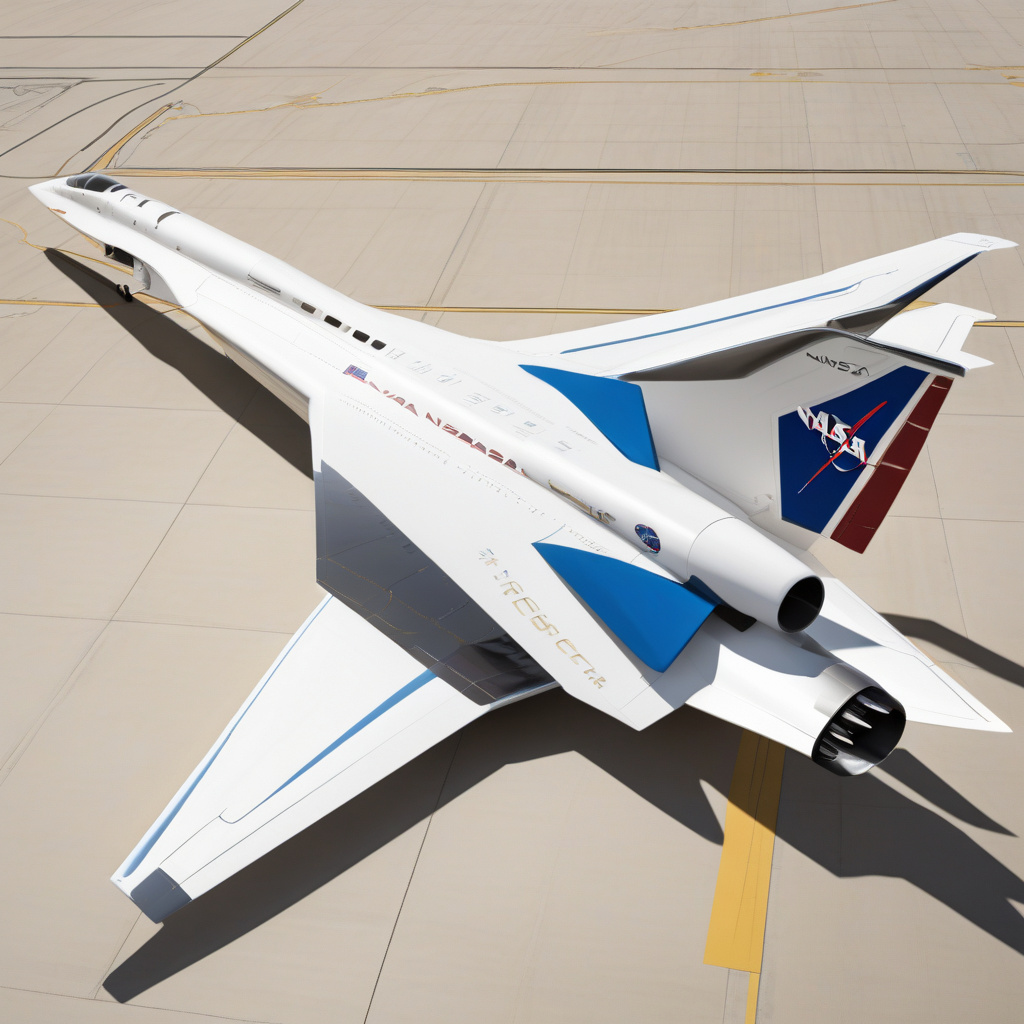Video: NASA’s Supersonic Jet Conducts ‘Taxi Tests’ to Break Sound Barrier Silently
For the first time, NASA’s X-59 quiet supersonic aircraft has moved under its power, marking a significant milestone in the quest to revolutionize supersonic travel. The X-59, developed under NASA’s Low-Boom Flight Demonstration program, aims to address the longstanding challenge of sonic booms, which have restricted supersonic flight over land for decades. By mitigating these sonic booms, the X-59 could pave the way for the revival of commercial supersonic travel, offering passengers faster and more efficient flights without the disruptive noise associated with breaking the sound barrier.
The recent ‘taxi tests’ conducted by NASA involved the X-59 being towed by a truck at the Armstrong Flight Research Center in California. These tests allowed engineers to evaluate the aircraft’s systems and performance on the ground, a crucial step before the X-59 takes to the skies for its flight tests. During these upcoming flights, the X-59 will reach speeds of up to 1.5 times the speed of sound, allowing researchers to gather data on the aircraft’s unique design that reduces the intensity of sonic booms.
One of the key features of the X-59 is its long, slender shape, specifically designed to generate a softer thump instead of a loud sonic boom when traveling at supersonic speeds. By shaping the aircraft to control the way air flows over its surfaces, NASA engineers have been able to minimize the shockwaves typically produced during supersonic flight. This innovative design approach has the potential to revolutionize the aviation industry, opening up new possibilities for high-speed air travel with minimal noise impact on the ground.
In addition to its groundbreaking design, the X-59 is equipped with state-of-the-art instrumentation to measure the aircraft’s acoustic signature during flight. These measurements will be crucial in proving that the X-59 can indeed fly quietly enough to meet regulatory standards for overland supersonic flight. By demonstrating the X-59’s ability to break the sound barrier silently, NASA aims to reshape the future of aviation and make supersonic travel a viable and sustainable option for the 21st century.
The successful completion of the taxi tests represents a significant step forward in NASA’s ambitious goal to reintroduce supersonic passenger travel. With the X-59 leading the way in quiet supersonic technology, the dream of flying faster than the speed of sound without disturbing those on the ground is closer to becoming a reality. As the X-59 prepares to soar through the skies in the coming months, the world watches with anticipation, eager to witness the next chapter in the evolution of aviation.
In conclusion, NASA’s X-59 quiet supersonic aircraft’s recent ‘taxi tests’ mark a crucial milestone in the development of technology that could revolutionize supersonic travel. By addressing the issue of sonic booms and aiming to fly faster than the speed of sound silently, the X-59 represents a significant leap forward in the future of aviation. As the X-59 progresses towards its flight tests, the possibilities of commercial supersonic travel without the disruptive noise of traditional supersonic flight are becoming increasingly promising.
#NASA #SupersonicJet #QuietTechnology #AviationInnovation #FutureOfFlight












